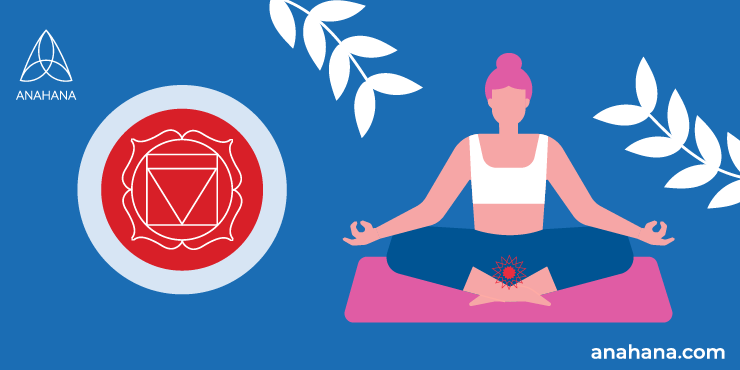
Table of Contents
Explore the significance of the red chakra and its impact on grounding and vitality. This article provides practical insights on activating and balancing this energy center, promoting stability and physical well-being. Elevate your life with a straightforward guide to harnessing the transformative energy of the red chakra.
Red Chakra Explained
The red chakra, also known as the Root Chakra or Muladhara in Sanskrit, is the first of the seven chakras in the body's energy system. Located at the base of the spine, it is associated with feelings of stability, safety, and groundness.
Understanding The Red Chakra
Chakras are vital energy centers in the human body, and the first chakra, known as the Root Chakra, is the foundation of the whole chakra system. Understanding the significance of the Root Chakra color offers insights into this energy center and guides balancing and optimizing its functions.
Functions of the Red Chakra
The Red Chakra represents our connection to the earth and is associated with the Earth element. Physically, it governs the adrenal glands, and an imbalanced Root Chakra can result in physical symptoms such as chronic fatigue, lower back pain, and immune system disorders.
Energetically, a balanced Root Chakra creates a steady flow of raw energy, helping us to feel grounded and secure while also serving as the center for our primal instincts, including survival and self-preservation. A healthy Root Chakra lays the groundwork for personal growth, self-confidence, and spiritual well-being.
Blocked Red Chakra
A blocked chakra is a chakra that is not functioning correctly due to a blockage or disruption in the flow of energy within that particular chakra. Depending on the chakra, this can disrupt specific physical, emotional, and psychological functions.
Signs of an Overactive Red Chakra
An overactive chakra occurs when the energy within a particular chakra is excessive or unbalanced, leading to an imbalance in the entire system. An overactive red chakra can manifest in several ways, including:
-
Feeling constantly anxious, stressed, or worried, sometimes resulting in panic attacks.
-
Narcissism, which sometimes leads to social isolation.
-
Being overly concerned with material possessions and security.
-
Experiencing an inability to relax or let go of negative thoughts.
-
Feeling lethargic or unmotivated due to an excess of stagnant energy.
-
Suffering from physical symptoms such as digestive problems, weight gain, or immune system disorders.
-
Gaslighting family, friends, and loved ones
These signs indicate a blocked Root Chakra and that the life force energy is not flowing freely throughout the body.
Signs of an Underactive Red Chakra
While an overactive Red Chakra can be problematic, so can an underactive one. An underactive Root Chakra refers to the blockage of the Chakra, which leads to a restricted flow of energy.
A lack of energy flow can occur due to various factors, including physical, emotional, and psychological imbalances. Some of the symptoms include:
-
Dissociation, or feeling disconnected from the physical body or the physical world.
-
Struggling with anxiety, fear, or feelings of insecurity.
-
Experiencing a lack of motivation or drive.
-
Feeling a sense of aimlessness or lack of direction in life.
-
Suffering from lower back pain, sciatica, or other leg or foot issues.
-
Struggling with issues related to trust or feeling safe.
These signs may indicate an energy shortage in the Muladhara Chakra and that red energy is not flowing freely. It is important to balance an overactive Root Chakra to restore harmony and balance to the chakra system.
What Does a Balanced Red Chakra Feel Like?

When this chakra is balanced, a person feels rooted in their body and the present moment, with a strong connection to the earth and a sense of safety and trust in the world around them.
People with a balanced red chakra tend to be calm, confident, and grounded, with a clear sense of purpose and direction. They have a strong connection to their physical body and sense of self and can navigate challenges and changes with resilience and ease.
Physically, a balanced red chakra may manifest in good overall health, a strong immune system, and a stable metabolism. Emotionally, it may manifest as a sense of inner peace, contentment, and a feeling of being at home in your own skin.
How to Balance Red Chakra
Balancing the red chakra is essential for physical, emotional, and spiritual health. Here are some balancing exercises to correct a Root Chakra imbalance and initiate the chakra healing process.
Yoga Asana
Certain yoga postures can help to balance the Root Chakra. Some of the best asanas in yoga for the red chakra are:
-
Tadasana (Mountain Pose): Mountain pose grounds and connects practitioners to the earth, helping balance the Root Chakra.
-
Virabhadrasana I (Warrior I Pose): This pose strengthens and grounds the legs and helps open the hip flexors, supporting Root Chakra energy flow.
-
Balasana (Child's Pose): This posture helps calm and center the mind while grounding and connecting you to the earth.
-
Vrikshasana (Tree Pose): Tree pose helps strengthen and ground the legs while improving physical balance, which is important for the energetic balancing of the Root Chakra.
If the practitioner is uncomfortable performing these postures without a yoga teacher, they are encouraged to take a beginner’s yoga class. By incorporating these asanas into daily yoga, practitioners can balance and strengthen their Root Chakra, improving mental and physical health.
Essential Oils and Crystals
The use of essential oils and crystals is an ancient chakra remedy. To use these essential oils and crystals for Root Chakra balancing, practitioners can diffuse the oils or apply the products to the base of the spine. Some people also like to hold or wear the crystals or place them in their environment.
Some essential oils that heal Root Chakra imbalance include patchouli, cedarwood, vetiver, frankincense, and myrrh. Root Chakra healing crystals include red jasper, black tourmaline, smoky quartz, hematite, and garnet.
Red Chakra Meditation
Chakra meditation is a great way to heal the Root Chakra. Here is a simple chakra meditation technique to cultivate red chakra energy:
-
Find a comfortable position with your spine straight and your feet firmly planted on the ground. You can sit on a cushion or chair if needed.
-
Close your eyes and take a few deep breaths, inhaling through your nose and exhaling through your mouth.
-
Bring your attention to the base of your spine and visualize a red, glowing ball of energy at the root of your own body.
-
With each inhale, imagine this ball of energy growing larger and brighter, filling your entire pelvic region with its vibrant red light.
-
As you exhale, release any tension or stress from your body, allowing it to sink into the earth.
-
Focus on the red ball of energy at the base of your spine, allowing it to spin and pulse with vitality and strength.
-
If you notice any thoughts or distractions, acknowledge them and return your attention to the red ball of energy.
-
Stay with this meditation for as long as you feel comfortable, taking slow, deep breaths and allowing your body to feel grounded and secure.
Regular meditation can help balance and strengthen the Root Chakra, promoting feelings of safety, security, and stability in your daily life.
Mindfulness Practices
Mindfulness practices can be a powerful healing tool and balance the Root Chakra. Here are some techniques that can help:
-
Grounding: Take a few minutes daily to focus the inner self in the present moment, engaging all of your five senses and grounding your energy in your body.
-
Body Scan: Lie down and bring internal awareness to each part of the body, starting at the feet and working up to the crown of the head.
-
Gratitude Journal: Writing affirmations in a journal can help practitioners manifest feelings of grounding and gratitude.
-
Walking Meditation: Take a slow, mindful walk in nature, optionally barefoot, focusing on each step and the sensation of your feet on the ground.
-
Affirmations: Use affirmations to promote feelings of safety and security. Repeat statements such as "I am grounded and secure" or "I trust in the universe to provide for me" to help reprogram your thoughts and beliefs.
Incorporating these mindfulness practices into daily routines can help heal and balance the Root Chakra, promoting feelings of safety, security, and stability.
Takeaway
When the red chakra is balanced, practitioners feel grounded, secure, and confident in themselves and their place in the world.
However, when the red chakra is blocked or overactive, we may experience physical and emotional imbalances that can impact our overall well-being.
By incorporating practices that cultivate the earth’s energy, practitioners can promote a healthy and balanced red chakra, creating a solid foundation for personal growth and spiritual connection.
Frequently Asked Questions
How can I tell if my red chakra is unbalanced?
Signs of an unbalanced red chakra can include feeling anxious, insecure, or unsettled. Physical symptoms might manifest as fatigue or problems in the lower body, like back pain.
Emotionally, you may experience a lack of focus and a feeling of being disconnected from those around you. Balancing your Root Chakra can help restore your sense of security and stability.
What are some effective ways to balance the Root Chakra?
Balancing your Root Chakra can be achieved through various methods. Physical activities like yoga, especially poses that strengthen the legs and core, can help.
Meditation focused on grounding, perhaps visualizing red energy at the base of your spine, is another powerful technique.
Incorporating red foods and gemstones, such as red jasper, into your daily routine can also support Root Chakra healing.
Can balancing the Root Chakra improve my relationships?
Yes, it can. A balanced Root Chakra lays the foundation for a sense of security and trust in yourself and your relationships with others.
Feeling grounded and secure makes you more likely to establish healthy boundaries and connect with others meaningfully. This can improve relationships and a stronger sense of community and belonging.
References
https://www.researchgate.net/publication/338895528_Psychological_Significance_of_the_Chakras
https://www.researchgate.net/publication/342562977_A_Brief_History_of_the_Chakras_in_Human_Body
https://books.google.com/books/about/Chakras.html?id=810oDwAAQBAJ
https://health.clevelandclinic.org/chakras
https://www.fitsri.com/articles/chakra-colors-meaning-science
https://www.siddhiyoga.com/yoga/practice/chakras/chakra-colors
Disclaimer
The contents of this article are provided for informational purposes only and are not intended to substitute for professional medical advice, diagnosis, or treatment. It is always recommended to consult with a qualified healthcare provider before making any health-related changes or if you have any questions or concerns about your health. Anahana is not liable for any errors, omissions, or consequences that may occur from using the information provided.

By: Meriah McCauley
Meriah McCauley is a leading voice in holistic healing, known across North America for her expertise in chakra balancing, spiritual alignment, and energy-based wellness. Her work bridges the art and science of mind-body healing, shaped through years of study, practice, and mentorship. Meriah deepened her understanding of spiritual anatomy and the chakra system under the guidance of her guru, Dr. Don Stapleton, during her immersive training in Costa Rica. She later earned her Master’s degree in Psychology from Columbia University, specializing in Spirituality and the Mind–Body connection, which continues to influence her integrative approach. Today, she supports individuals and practitioners through coaching, yoga teacher trainings, chakra-focused education, and Holotropic Breathwork for personal transformation. Meriah is dedicated to helping others develop emotional clarity, energetic balance, and spiritual resilience—and she remains committed to guiding anyone seeking a deeper, more meaningful connection with themselves.